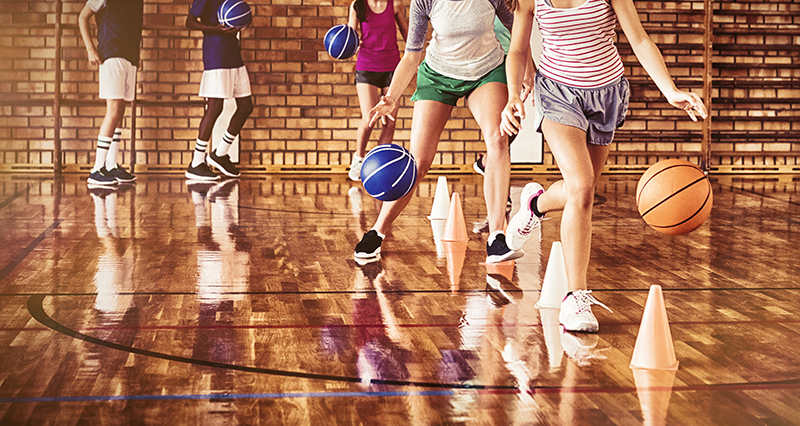As well as the traditional components of health-related fitness, the term fitness can be broken down into skill components. These are important in performing the more technical aspects of many sport and include speed, reaction time, agility, balance, coordination, and power.
Speed
Most sports and activities require some form of speed. Even long-distance running often requires a burst of speed to finish the race ahead of your competitors. Speed is defined as the ability to move a body part quickly. Speed is not always about how quickly you can move your whole body from A to B. It also relates to body parts. For example, when playing golf, the speed of your arms and upper body in creating the swing are vital in driving the ball over a long distance.
Reaction Time
Reaction time is how quickly your brain can respond to a stimulus and initiate a response. This is important in most sports. The most obvious being responding to the gun at the start of a race, but also a goalkeeper saving a penalty, or a badminton player reacting to a smash shot. The examples in sport are endless!
Agility
Being agile is all about being able to change your direction and the speed at which you are travelling, quickly and efficiently. This is common in sports such as football and rugby where the player with the ball dodges a defender, or in badminton or tennis, moving around the court quickly to reach the shuttlecock/ball in time.
Balance
Balance is the ability to maintain equilibrium whilst stationary or moving. Balance whilst moving is often called dynamic balance. Balance is important in all kinds of sporting situations, most notably in gymnastics and ballet but also contact sports where having good balance may prevent you from being tackled to the floor! Balance is linked to agility, as in order to quickly and efficiently change direction you must be balanced.
Coordination
Coordination is the ability to use the body parts and senses together to produce smooth efficient movements. We have all seen someone who is uncoordinated, their movement looks awkward and shaky. Being co-ordinated is vital in all sports, for example, hand-eye coordination in racket sports and the coordination to use the opposite arm and leg when sprinting.
Power
Power is the product of strength and speed. When we perform a task as quickly and as forcefully as we can, the result is powerful. For example, a sprint start, a shot-put or javelin throw or long-jump.



